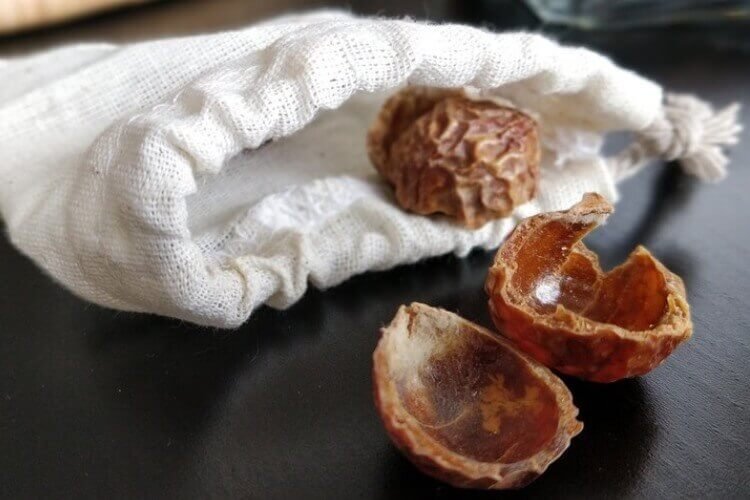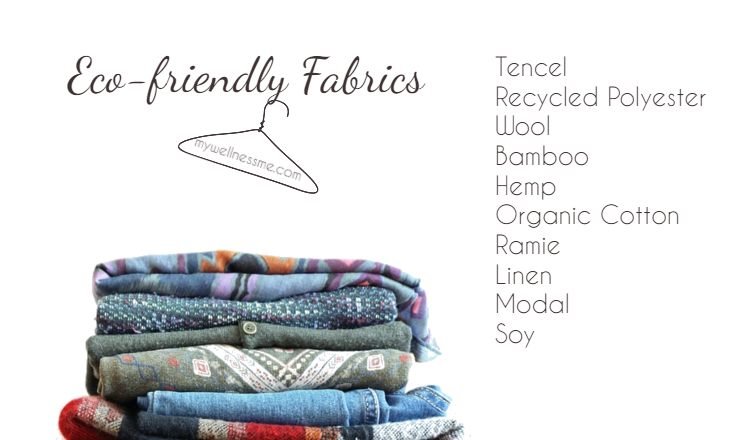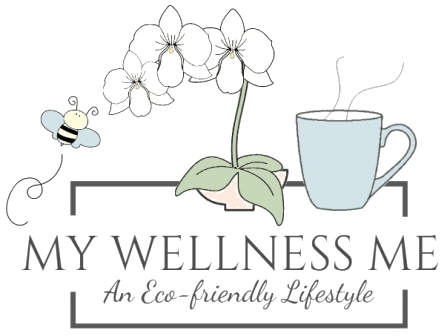An eco-friendly laundry routine positively impacts the environment.
It is not to be confused with greenwashing which is a whole different and not-so-nice beast altogether.
A sustainable laundry routine is very easy to manage. It requires no great decision-making.
No, you don’t have to live like a hermit in the mountains for two years contemplating the massive change you are bringing to your life. (Although a Grinch-like social distancing is not the worst idea in this pandemic time and if you want to know the true essence of slow living : ) . )
In fact, the alterations are few and if every household were to do them, can collectively make a ton of difference to the environment.
Let’s turn our attention to some these tips.
1. Avoid washing your clothes more than you have to
Sounds simple?
It is, though some discretion is required for certain clothing items (hello, undergarments and sweaty workout clothes). You definitely do not want to wear your socks for seven straight days without washing.
Just wash less than you’d normally do. We’re guilty of throwing clothes in the hamper after we’ve worn them a couple of times, even if they do not smell or are clearly dirty.
Jeans, for instance, can survive being worn a few times before it sees the washing machine. Some brands recommend six months before a wash. Maybe they have good reasons for such a time frame but I’d like to wash them a little more frequently; you don’t want to be a skunk on two legs.
The UN environment program’s suggestion on jeans sounds more practical. It recommends that we wear them at least three times before washing, and wash them in cold water when we do.
There’s another sensible aspect to not washing your clothes too frequently.
Washing your clothes fewer times saves them from losing color.
Wash similar-weight clothes together
Clothes of lighter material dry faster. A cotton shirt, for instance, will take less time to dry than a towel.
So, group items together that have similar drying times.
Wash your clothes inside out
This is one of those eco-laundry solutions that I feel is not tried enough.
Washing clothes inside out stops the fabric from wearing out. Besides, you are washing the part closest to your body which is liable to be affected by sweat and body odor.
When you finally wash them, try to use chemical-free washing powder or detergent.
And if you have a hard time finding them, try some DIY.
2. Try DIY green detergents
Soapnuts (Reetha nuts) is one of the go-to detergents for my eco-friendly laundry routine. These natural surfactants are also a part of my DIY Ayurvedic shampoo recipe.
They turn soapy when they come in contact with water. Besides, they are cheap, easy to compost later, and leave no residue in the machine.
Best of all, using soapnuts as detergents is a hassle-free exercise.

All you need just is about five or six soapnuts. Place them in a breathable fabric bag and add the bag to the laundry load.
After the washing is over, you can dry them in the sun. Soapnuts happen to be quite durable so can use them till they become grey and this is when you know it’s time to compost them.
Another simple and effective DIY detergent requires a combination of two cups of water, two cups of white vinegar and 30 ml of food-grade glycerin. Use one-fourth of a cup for every load.
If you want to soften the water, use white vinegar. It is acidic in nature, which helps to neutralize the water in the machine by counterbalancing the base nature of the soaps. This makes it easier to rinse off soap from your clothes.
What about ubiquitous baking soda, you may be wondering?
Yes, we know it’s seems impossible to leave baking soda out of any natural DIY venture and it serves a purpose here too.
Baking soda mixed with detergents help to deodorize clothes and also brighten their colors. It is also great in combination with water to remove stubborn stains.
Use correct detergent dosage
This is important.
Using more than recommended dosage does not mean your clothes remain clean longer but only serves to use up more water.
Conversely, using less than the recommended dosage will not do a good job of cleaning your garments.
3. Read the labels
Like most things that are extremely easy to do, it’s not uncommon for labels to be ignored.
Look for detergents made from vegetable-based (not petroleum-based) ingredients. They do not add to the planet’s carbon footprint and are also not dangerous for the skin.
Commercial detergents bring with them a whole host of problems. They can affect marine life, damage your clothes and even have health hazards.
In fact, choose detergents that are certified biodegradable and environment-friendly from places you have researched and trust.
Some of these may not have that nice smell associated with commercial products. No problems. You can add essential oils of your choice to give them the desired fragrance.
Find out more about essential oils that you can use and ways in which you can keep you clothes fresh and smelling good.
4. Avoid chlorine bleach
Chlorine bleach is not a good friend to the human body.
Here’s why.
Chlorine bleach can cause irritation in the nose and eyes, and swallow it at your own risk.
It’s twice as dangerous with accomplices. In combination with cleaners like ammonia, chlorine can form lung-debilitating gases.
With acids in cleaning products, it combines to form the deadly chlorine gas that can damage the respiratory tract.
Chlorine also contaminates drinking water and once it makes it to the environment, it may take hundreds of years to break down to point where it becomes harmless.
What’s the alternative?
Non-chlorine bleach. Hydrogen peroxide being the best choice of the lot.
Let’s now turn our focus to those lovely machines responsible for cleaning out clothes.
5. Washing machines – stick with the old or buy new?
Do not replace a washing machine in good condition even if it’s a little long in the tooth.
For the environment, it’s better to persist with an old machine that still does a good job than bring in a new one.
If an old machine is beyond salvation, then it makes sense to buy a new machine as long as it is a high-efficiency model.
What is a high-efficiency washing machine?
They are some of the most eco-friendly washing machines out there and offer benefits that just cannot be ignored:
- They use up to 65 percent less water and 50 percent the energy than conventional models.
- They maximize efficiency in the wash and dry cycles.
- They are low maintenance as long as you conform to the manufacturer’s instructions.
- They use less electricity and less water.
- They are gentler on the clothes.
Top load or front load – choose the right machine
I don’t know about you but my dreams as a kid about cleaning my clothes as an adult involved a magic wand. It certainly had nothing to do with deliberating what type of washing machine to use.
Anyway reality sucks.
Moving on…
Modern front load washing machines require a lot less water to wash clothes.
While top loaders can consume over 50 gallons of water, the best front loaders may require less than 10.
It depends on the load of the laundry too, so you must read the instructions that come with buying the machine.
Optimize the load. A half filled washing machine still uses over 90 percent of the energy and close to 75 percent of the water that is required with a machine with a full load.
If you are not willing to part with your old appliance but you still want to contribute to the environment, the solution is simple. Wash your clothes in cold water.
Why?
Because 90 percent of the energy used to wash clothes goes into heating the water.
6. Beware of synthetic microfibers
Microplastics (plastic particles less than 5 mm long) from our laundry wastewater make their way into the ocean and are a major contributor to the problems faced by marine life.
How bad is this microplastics problem?
It’s really bad.
Almost all tested fish have microplastics in them. They ingest plastic fibers, which is not good for them or the animals, including humans, who eat them.
Synthetic fabrics like acrylic, fleece and nylon are particularly culpable. You can opt for more eco-friendly alternatives such as bamboo, organic cotton and wool.
But what if you already own synthetic fabric?
Simply buy a wash bag that can capture these particles in the machine. Or get something like PlanetCare’s filter, which the company released in 2019 that is specifically designed to trap microplastics.
If you want an even better alternative to your eco-friendly laundry routine then you have to go old-school. In other words, you greatly reduce washing machine use or, if you can, do away with them altogether and give your arms a good workout. Time to get those Ronda Rousey arms.
7. Reap the benefits of washing by hand
It’s a time consuming exercise no doubt, but the planet will be a lot happier if you give your washing machine some rest.
One of the greatest advantages of washing your clothes by hand is the positive effect on the water footprint. It takes less than half the amount of water to wash clothes than what is required with a washing machine.
Use the sink for smaller loads but if you’ve piled up a mini Everest use the bathtub.
You will also be using less amount detergents if you wash by hand.
Plus, you avoid your clothes being damaged in the rough and tumble of the wash cycle. This increases the lifespan of your clothes and is a particularly good tip for people who’ve embraced slow fashion.
Moreover, you have a greater control of what’s going on because the washing is happening right in front of your eyes.
After you’ve washed your clothes to a point where you are satisfied with your work, what then?
Do you use the dryer or try out some other alternative?
8. Hang clothes out to dry
Refrigerators aside, dryers are the most energy consuming appliance in a household.
If possible, do not use the dryer at all. There are close to a 100 million dryers in America that are responsible for more than a ton of carbon dioxide annually.
Line drying is a very good alternative. (Check if your local authorities allow this.)
One benefit of line drying, besides energy consumption, is that clothes do not have to suffer the potential wear and tear that can occur in a dryer.
Drying clothes close to wood-burning stoves is another option, which not only speeds up the drying process but also humidifies the air inside the room.
9. Optimize your dryer
If for some reason, you cannot line dry your clothes, stick with your dryer.
But use it in such a way that you extract every ounce of benefit it offers.
Here’s what you can do.
Clean the filter with regularity which helps bring down the drying time and improves efficiency.
Also, take advantage of the moisture sensor in the dryer. This enables the machine to shut down automatically when the clothes are dry, thus saving energy. It also protects the clothes from unnecessary wear and tear.
Finally, stay away from dryer sheets which contain toluene and styrene that may cause cancer. These can also weaken organic fabrics and subsequently reduce the life of your clothes. Eco-friendly wool dryer balls are good alternatives.
10. Use the laundromat
Pay a visit to the laundromat.
The washing machines and dryers they use are more efficient that what is used domestically.
You can ask the service people to use eco-friendly detergents, something more and more laundromats are willing to do nowadays.
11. Do you have to iron, always?
Ironing consumes energy and the direct heat applied on the clothes is not good for their longevity.
This does not mean you walk around like an unkempt drifter. I’m looking at you Radagast the Grey.
If you hang your clothes immediately after you wash them, the water content still in the garments can take care of most of the wrinkles.
12. Dry cleaning is not good for the environment… and us
First and foremost, dry cleaning is not dry.
It’s just that instead of water the chemical perchloroethylene (“perc”) is used which is not good for our health. Plus, the process is somewhat superficial and cleans only the surface of the clothes.
Exposure to perc may cause bladder and cervical cancer.
The menace does not stop there.
Fertility can also be affected and you may suffer irritation of the eyes, nose and throat.
To circumvent this problem, just stop buying clothes that need dry cleaning.
Or, if you already have clothes that require such a treatment, dry clean less frequently.
These days, some businesses have started to go green, using liquid carbon dioxide as an alternative to perc.
13. Go for eco-friendly clothing
An eco-friendly laundry routine would seem somewhat incomplete without sustainable garments.
Buy clothes made from natural materials that do not use chemicals in the production processes and take up minimal resources.
Some good examples are bamboo, hemp, linen, organic cotton, soy cashmere, tencel, and wool.

These are friendlier on the human skin and much better for the environment. Although keep in mind that no product is perfectly green.
As you can see, a sustainable laundry routine is very achievable. And if you can’t, it’s all right to not go on an adrenalin-filled bayonet charge on all the suggestions at once. Do few at a time.
Any route you take, our planet will be healthier and happier for our efforts.
What do you think about these tips for an eco-friendly laundry routine? Let us know in the comments.


10 comments
This is brilliant! I never thought there were so many other ways to be more eco during laundry. We currently use an Eco-egg but have found it doesn’t really budge the toddler stains which has been the bane of my life since the girls were born. I will definitely be trying more of these suggestions though!
– Hannah
Ecoegg is no doubt one of the better eco-friendly detergent options out there. Thank you for mentioning the toddler stains part :). I have a mind to write something about it in one of my future posts.
Thanks for the great tips on how to wash clothes with less water.
Glad you found this useful 🙂 .
Thank you. Love these ideas!
Thanks Sarah.
These are some great tricks! Thank you 🙂
Thanks Pragati.
Wow, I love this post and how well you have written it.
We do our best to use eco-friendly detergent and front loader washers are currently our favorite. I have to start turning my clothes inside out; who does not want the cloth and color to be preserved?
I try to wear things like leggings and skirts three times before washing them but, depending on my day, my shirts sometimes get sweaty a little faster! 🙂
Thanks Jaya : )
Exactly. Make them last longer and keep the planet smiling at the same time.
Comments are closed.